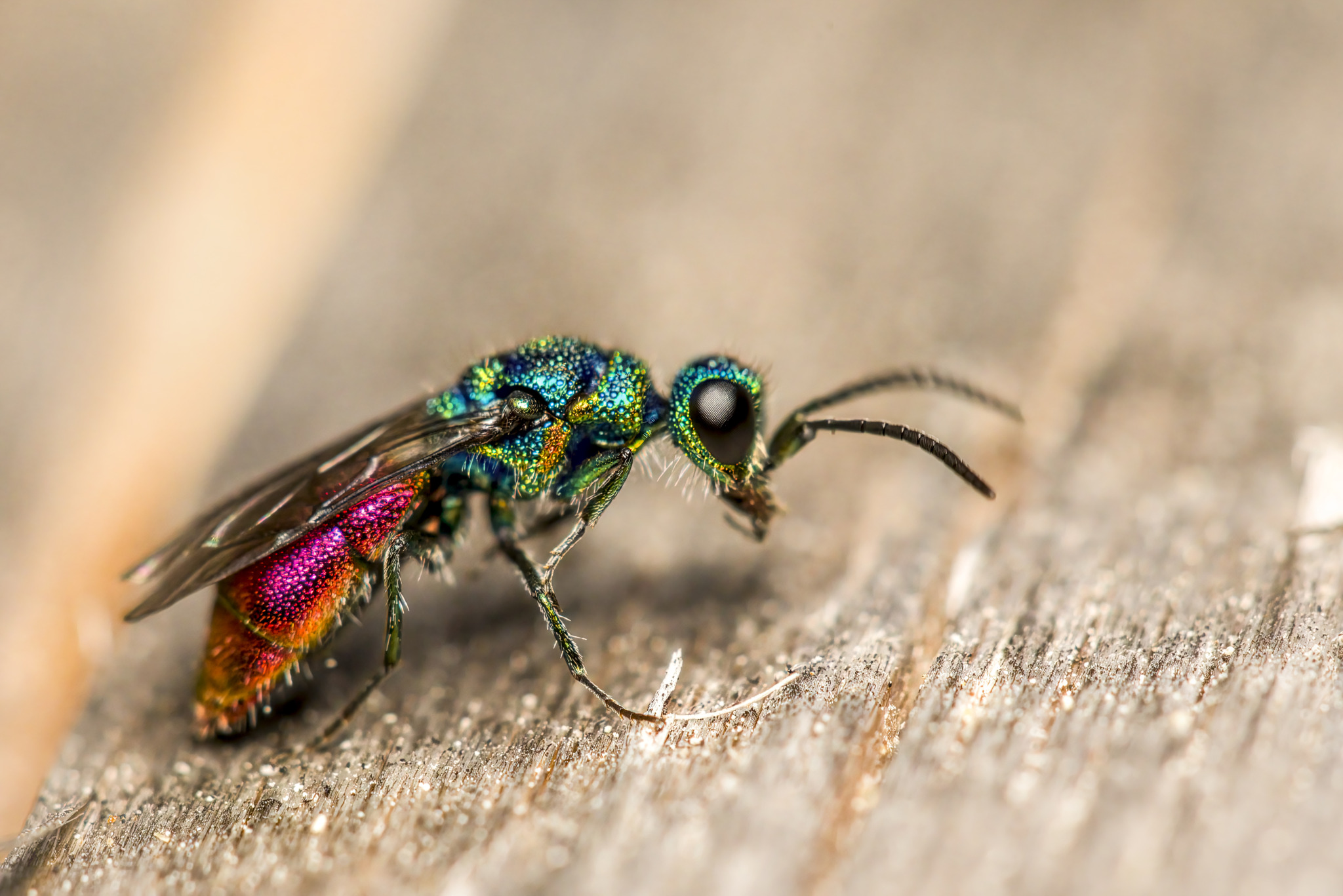The Ruby-tailed Wasp, scientifically known as Chrysis ignita, is a stunning and fascinating insect belonging to the family Chrysididae. This family is commonly referred to as cuckoo wasps due to the behavior of many species, which involve parasitizing the nests of other solitary bees and wasps.
The Ruby-tailed Wasp is aptly named for its striking metallic coloration, which ranges from bright ruby red to coppery bronze, depending on the angle of light hitting its exoskeleton. This iridescent appearance makes it one of the most visually captivating insects found in many regions of Europe and parts of Asia.
In addition to its vibrant coloration, the Ruby-tailed Wasp is known for its unique life cycle. Females of this species lay their eggs in the nests of solitary bees or wasps. When the host’s larvae hatch and develop, they provide a food source for the Ruby-tailed Wasp larvae, which feed on the host larvae and provisions.
Although Ruby-tailed Wasps are solitary insects, they can often be found in areas with suitable nesting sites, such as sandy or loamy soils. They are commonly seen foraging for nectar and pollen on flowers, using their long, slender bodies to probe deep into the blooms.
Despite their small size, Ruby-tailed Wasps play a crucial role in ecosystems as both predators of pest species and pollinators of flowering plants. Their presence adds a splash of color and intrigue to natural landscapes, making them a delight to observe for insect enthusiasts and photographers alike.
Views: 176
Subscribe to the newsletter:
